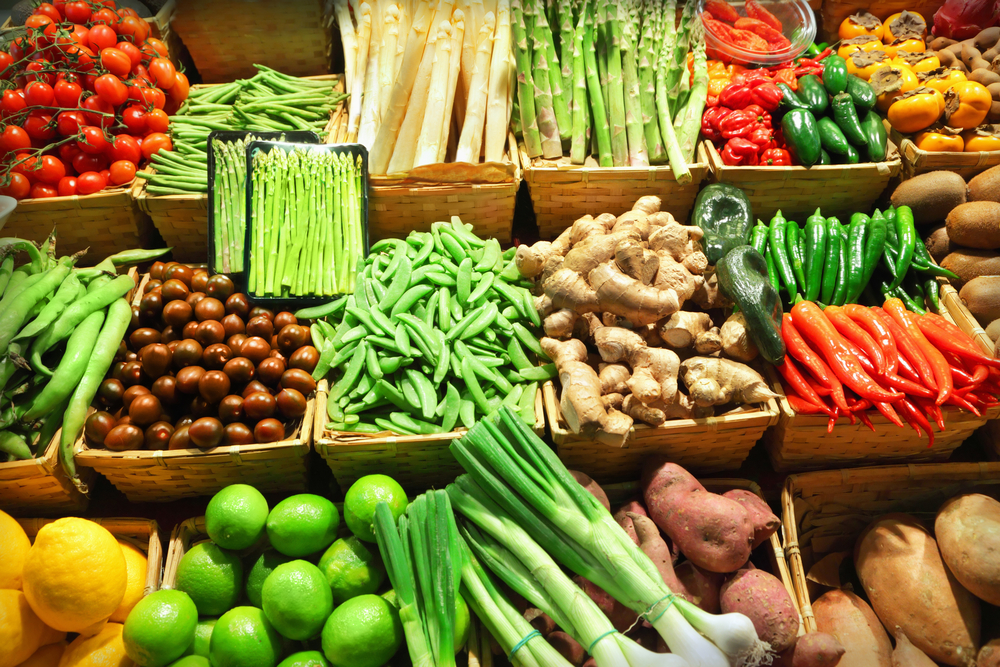Food Labels: Definition of Natural & Organic

"Natural" and "organic" are common on food labels, but the terms can be confusing. "Natural" labeling is simple, but vague. "Organic" labeling is more complicated. There are, however, specific definitions for each term, according to the U.S. Department of Agriculture (USDA).
What is natural?
For a product to be labeled as "natural," it must contain no artificial ingredients or added color, and must be only minimally processed, according to the USDA. Minimal processing is defined as a food product that was processed in a way that does not fundamentally alter the product. In addition, a natural food product must also be labeled with a statement explaining the meaning of the term "natural," such as "no added coloring," "no artificial ingredients" or "minimally processed."
"However, since that definition is arguably vague and does not address food processing or manufacturing methods, it begs the question of whether this term is appropriate at all on a food, or whether it leaves too much room for interpretation and misinterpretation," said Dr. Leah Holbrook, coordinator of graduate nutrition programs at Stony Brook University Hospital and Medical Center.
Kent Messer, a behavioral economist with a specialty in agriculture and food, and director at the Center for Experimental & Applied Economics, agrees that the definition is vague. "The definition for natural tends to be much looser than that of organic, especially the phrase 'minimally processed,' and generally does not require certification."
What is organic?
The definition of organic is stricter. For a food to be labeled "organic," it must be produced through approved methods. According to a USDA publication, the methods "integrate cultural, biological, and mechanical practices that foster cycling of resources, promote ecological balance, and conserve biodiversity. Synthetic fertilizers, sewage sludge, irradiation, and genetic engineering may not be used."
"By general definition, organic foods have not been treated with synthetic pesticides or fertilizers, and animals raised organically are not given hormones or drugs to promote more rapid growth. Also, genetically modified organisms are not used on any organic farms," said Holbrook.
Also, the use of the organic label requires USDA certification. "Organic is the most heavily regulated food system," said Jaclyn Bowen, director of QAI (Quality Assurance International), a division of NSF International, a leading USDA-accredited organic product certifying agency located in San Diego, California. QAI and inspectors like them verify organic integrity, from the land where products are grown to post-harvest facilities and processing plants to the retail stores. "Organic producers and processors also are subject to rigorous announced — and unannounced — certification inspections by third-party inspectors to ensure that they are producing and processing organic products in a manner you and your family can trust," Bowen told Live Science.
A label can include the word "organic" if the product contains a minimum of 95 percent organic ingredients. This means that up to 5 percent of the ingredients may be nonorganic agricultural products that are not commercially available as organic or nonagricultural products on a list approved by the USDA. Foods with the "Made with organic ingredients" must contain at least 70 percent organically produced ingredients.
For a product to be labeled "100 percent organic," the USDA states that it must meet these criteria:
- All ingredients must be certified organic.
- Any processing aids must be organic.
- Product labels must state the name of the certifying agent on the information panel.
The majority of raw, unprocessed farm products can be designated "100 percent organic" because the product has no added ingredients. Farm products that have no added ingredients, like flours and rolled oats, can also be labeled "100 percent organic."
Can a food be both organic and natural?
A food can be both, but a natural food item is not necessarily organic, and vice versa. "While studies have shown that consumers misinterpret the true meaning of both of these terms, the misunderstanding seems to be greatest for the term 'natural,' as consumers often believe that food labeled 'natural' shares many of the characteristics of 'organic' food, which is often not the case," said Messer.
Organic foods are produced, manufactured and handled in ways that meet the USDA organic standards. Natural food, on the other hand, are generally processed in a manner that does not fundamentally alter the product.
"Unlike 'natural,' only 'organic' offers government-backed assurance that products are grown and processed without the use of toxic chemicals, antibiotics and synthetic growth hormones," said Bowen. "Unfortunately, 'natural' does not mean 'organic' and comes with no guarantees."
Benefits of natural and organic foods
Some studies have shown that eating natural, pesticide-free foods is good for people's health, but long-term research is lacking. One study found that people who eat organic produce have lower levels of pesticides in their system, for example. Food that are whole and contain less added salt, sugar and preservatives have also been found to be healthier, though there isn't much research into the actual term of "natural."
What are some things consumers should know about organic foods?
Holbrook provided this list as a few things that consumers should consider when it comes to organic foods:
- Organically grown foods are not always healthy foods. For example, sugar should be limited in one's diet, and overall calories need to be appropriate for one's gender, height and weight, age and activity level. Organic snacks, such as cookies, candy, chips, cereal bars and juice, are not items that should be consumed regularly or thought of as healthy food items.
- Meat and poultry from organically raised animals meet the definition, but with so many other terms assigned to meat, it can be very confusing. For example, red meat and poultry labeled organic does not mean the animal was pasture-raised, also known as grass-fed (fed grass and forage, the evolutionarily traditional diet for cattle). Rather, an organic animal may have been raised on a diet of organic grain (a conventional type of diet for cattle). A grass-fed diet has the advantage of producing meat that has a healthier fat profile than the meat of a conventionally fed animal. While you can find grass-fed and organic, consumers often mistake organic to also mean that the animal was fed outside on an open pasture.
- Many consumers drawn to organic food may also care greatly about supporting local farmers. Organic foods are often grown thousands of miles away from where they are ultimately purchased. This affects environmental health as a result of resources used for transport and can deplete nutrients as food travels great distances under changing temperature, light and humidity. So, some people may prefer locally grown food (even if it doesn't contain the organic seal) over organic food grown in other countries. Tip: Ask local farmers if they use sustainable farming methods; many do and just do not apply for the USDA organic seal due to the costs involved. According to the USDA, producers who market less than $5,000 worth of organic products each year are not required to apply for organic certification, but still must comply with the organic production and handling requirements.
Additional resources
Sign up for the Live Science daily newsletter now
Get the world’s most fascinating discoveries delivered straight to your inbox.










